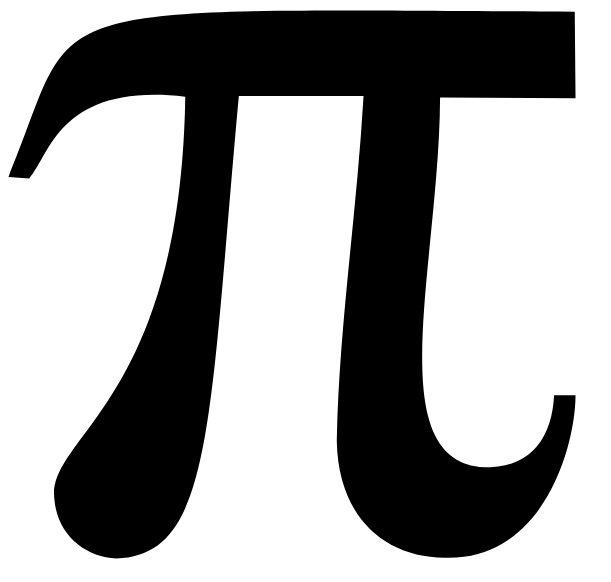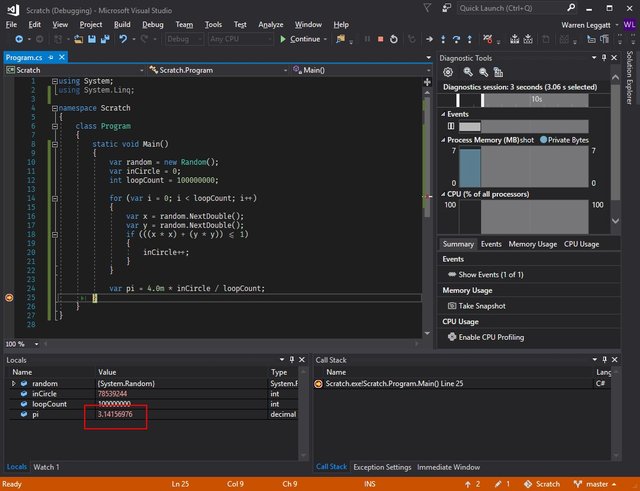
Also known as the Monte Carlo Method, a technique for solving problems with statistics.
The following will give you an approximation of Pi by generating x,y coordinate pairs and then determine how many of those that fall within a circle. From there with a bit of probability gives us our approximation of PI.
static double CalculatePi()
{
var random = new Random();
var inCircle = 0;
int loopCount = 100000000;
for (var i = 0; i < loopCount; i++)
{
var x = random.NextDouble();
var y = random.NextDouble();
if (((x * x) + (y * y)) <= 1)
{
inCircle++;
}
}
var pi = 4.0m * inCircle / loopCount;
}
Here it is running. As you can see, not too far off. The more times you loop the closer it gets :)

NOTE: The PI symbol image is from Wikimedia Commons
Woz
Nice! I played around with a JavaScript implementation yesterday but I didn't write a post about it yet. I'm still trying to visualize the process by showing the random points on an actual circle and draw a live graph of the process. Maybe later this week :)
Downvoting a post can decrease pending rewards and make it less visible. Common reasons:
Submit
I'm all for \tau.
Btw. there is the math tag.
Downvoting a post can decrease pending rewards and make it less visible. Common reasons:
Submit
Your article has been upvoted and selected for Math-Trail Magazine N.14. You will also receive 5% of the author-rewards generated by the Magazine.
Downvoting a post can decrease pending rewards and make it less visible. Common reasons:
Submit